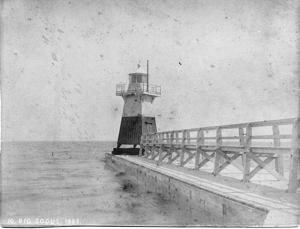F or the last two centuries, Sodus Bay has been an important port of call on the southern shore of Lake Ontario, from shipping iron ore and coal in its days as a commercial port to hosting pleasure craft of all kinds today. From its earliest settlement in 1794, Sodus Point was thought by Charles Williamson, agent of the Pultney Estate, to have the potential to be one of the most significant harbors on Lake Ontario due to its size and protection offered from Lake Ontario’s rough waters. There was one problem: The entrance to Sodus Bay was treacherous, with shifting sand bars hindering navigation by large vessels.
On May 26, 1824, Congress acted, appropriating $4,500 (around $150,000 today) for the construction of a lighthouse at Great Sodus Bay. By June, officers from the Naval base at Sackets Harbor were dispatched to Sodus Bay to select an ideal site. In November, William and Catherine Wickham sold 3 acres (where the Sodus Bay Lighthouse Museum sits today) to the U.

S. government for $68.75.
This site offered a commanding view over what was then the approach into the bay. The following year brought the construction of a 40-foot-tall light tower and keepers house on the bluff overlooking what was then passage into the bay. Ishmael Hill of Sodus petitioned the Secretary of the Treasury to serve as the first keeper of the Sodus Bay Lighthouse on the basis of his service during the War of 1812 and his time as a prisoner of the British.
He was appointed on Nov. 9, 1826, though h.
















